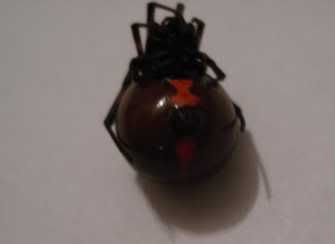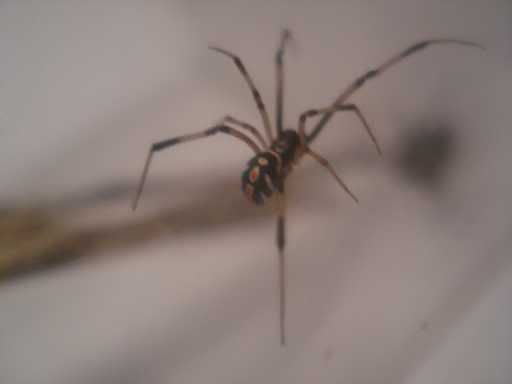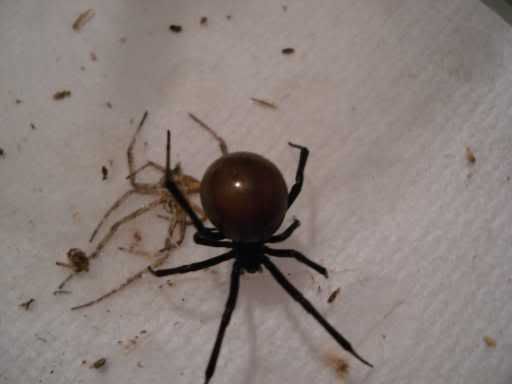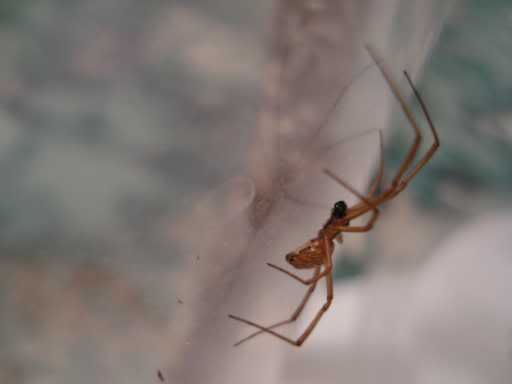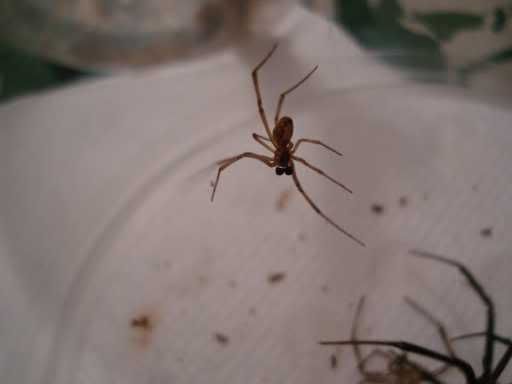- Joined
- Aug 24, 2003
- Messages
- 373
Here are a couple of pics of one of my L.tredecimguttatus females. I have an all black specimen on the previous post and this represents my more colorful variety.
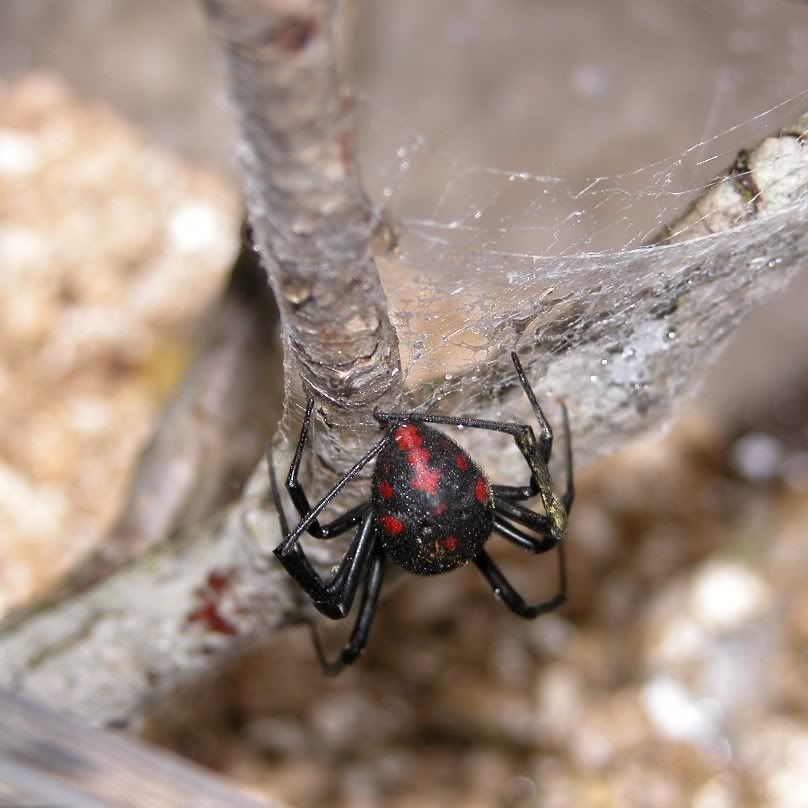
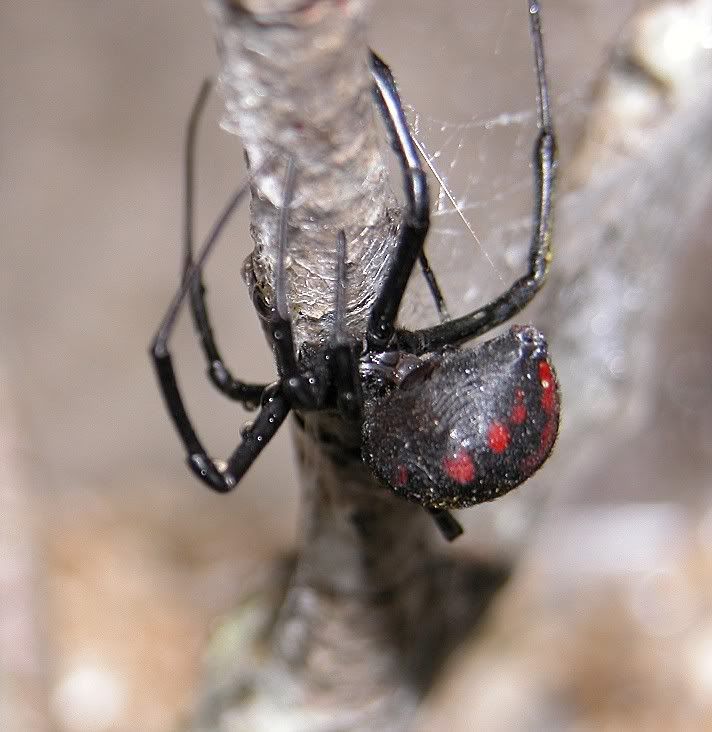




Thanks Sheri.JPD, those pics with the shadow in the background are tremendous!
Sometimes they can be tricky. Usually, I take a whole buttload of photographs and get one or two worth keeping.Anyone else find the black (as in the widows that have black coloration as opposed to the other varities) widows incredibly hard to photograph with any success?
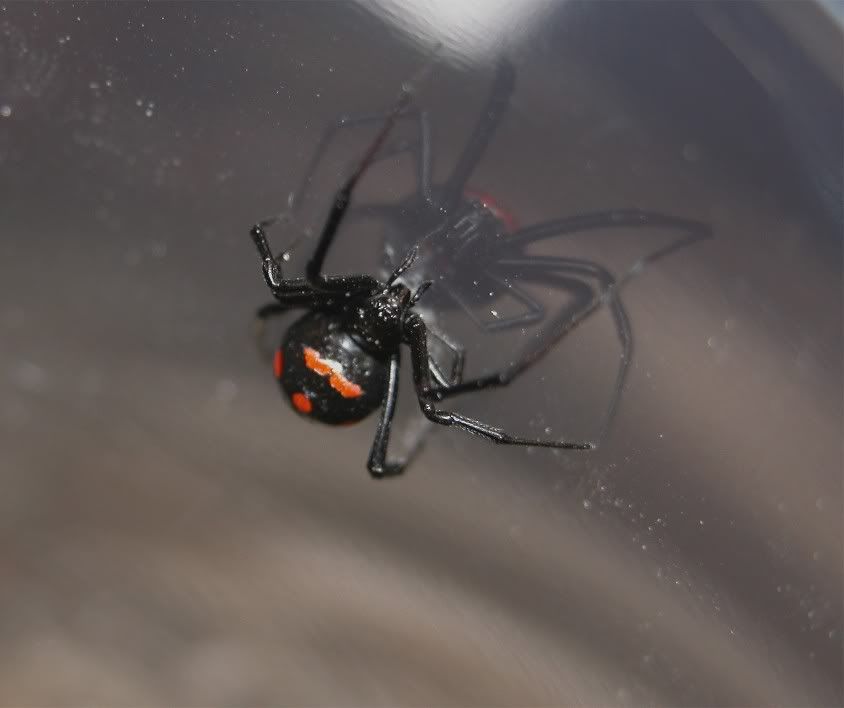
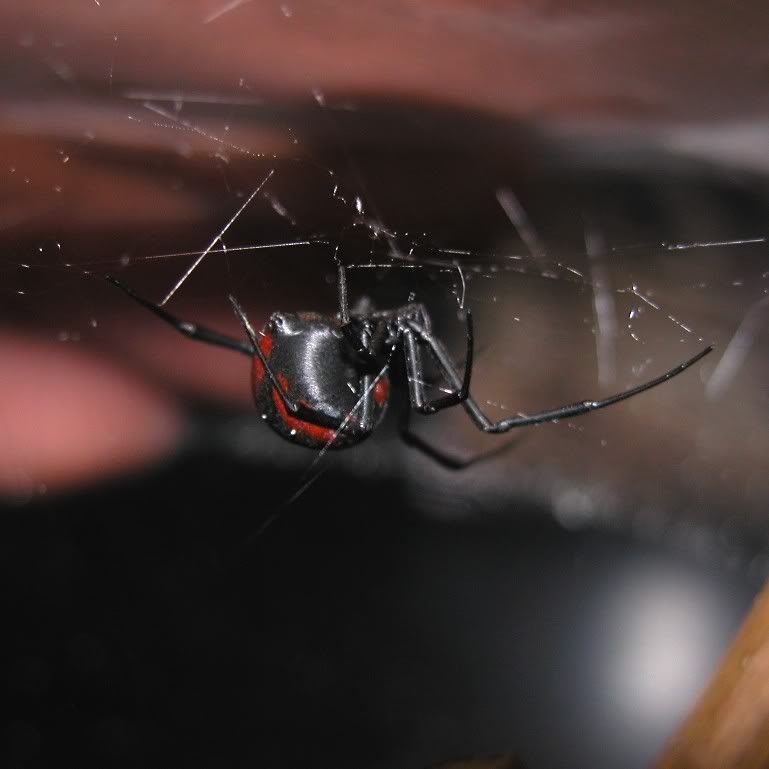
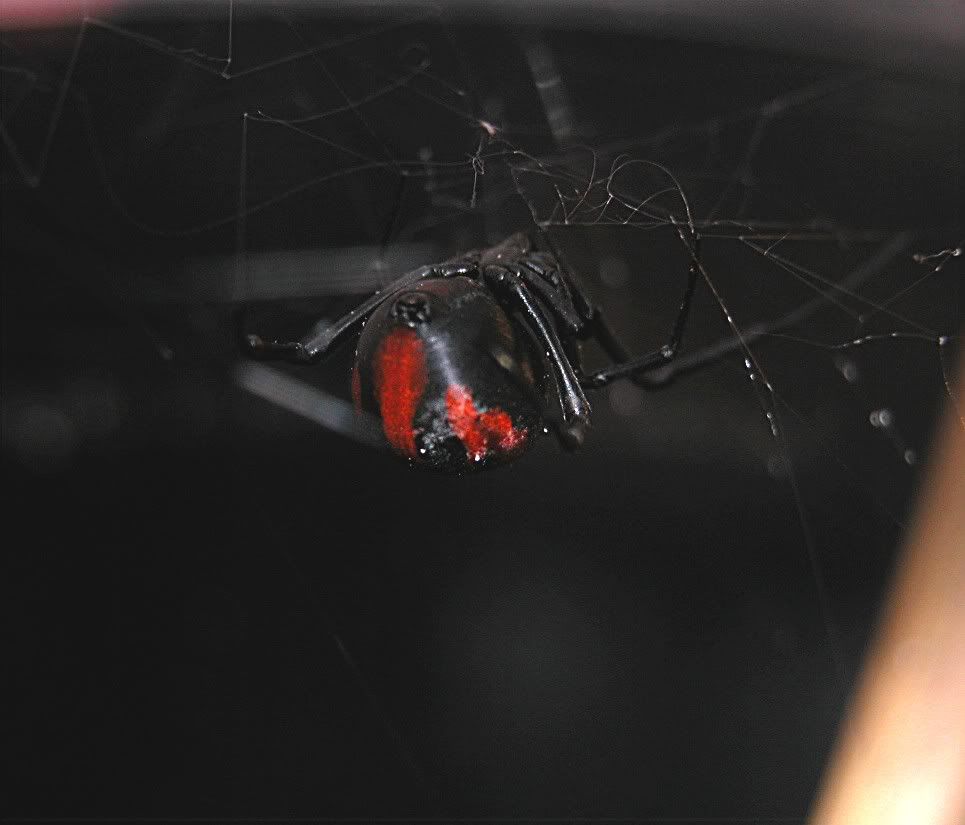
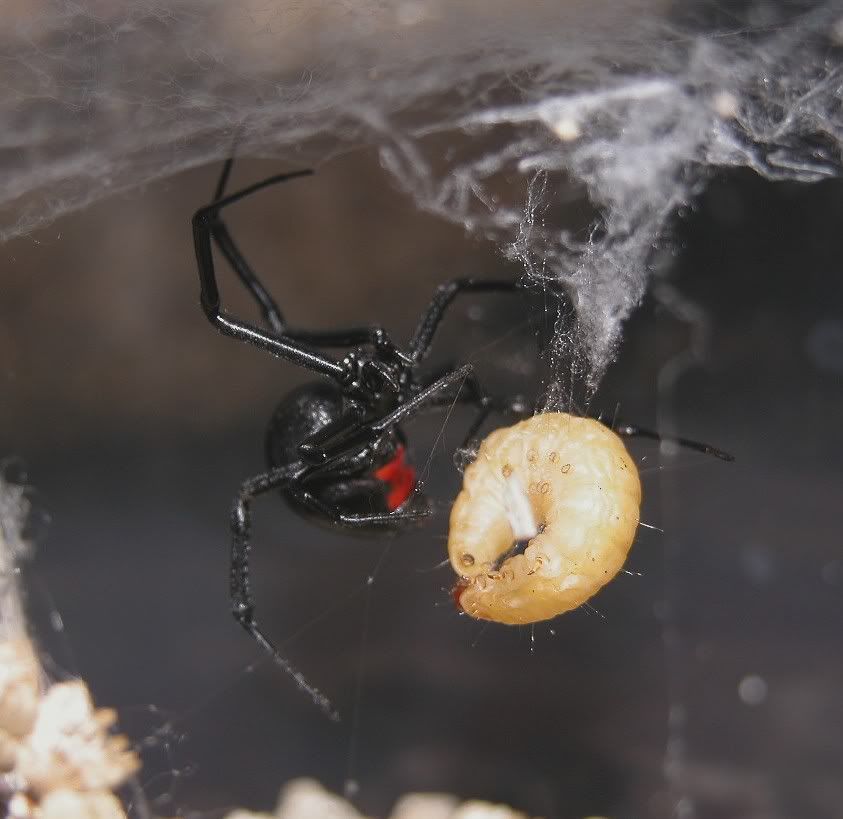
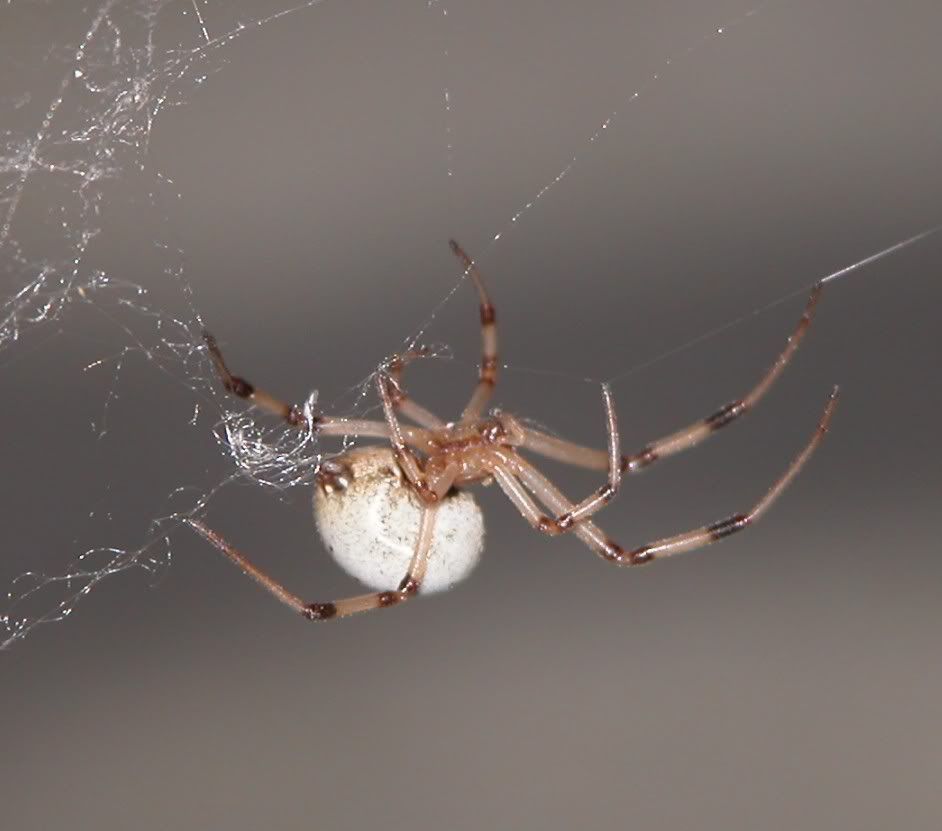




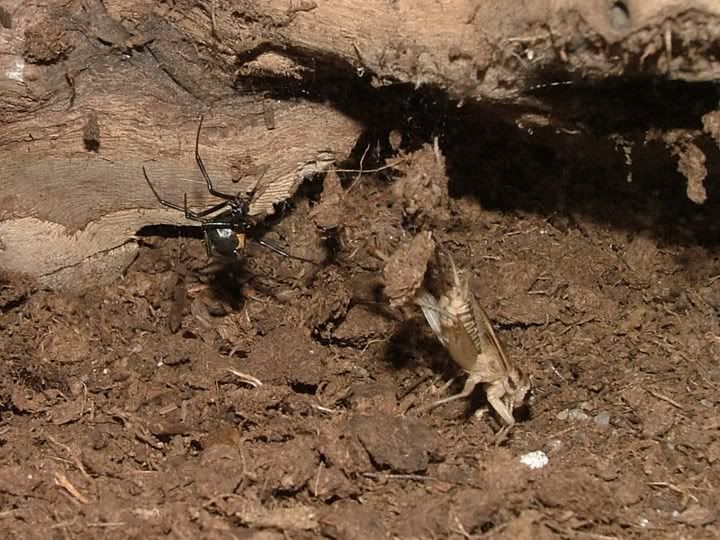
Oh wow, David F can i see that enlcosure? Looks like your keeping it in a tank or something, different from the Regular Enclosures.David_F said:
I don't have any pics of the whole enclosure. Nothing too impressive, really. It's just a 2.5 gallon aquarium with a bit of peat moss/sand substrate and a piece of grapevine. Probably a bit too big for one widow. I know it's a pain in the butt to get in to feed her.demonhunter said:Oh wow, David F can i see that enlcosure? Looks like your keeping it in a tank or something, different from the Regular Enclosures.
As far as I know that's true. Hopefully someone who knows for sure will answer.Also is this statement true..... "Only the female Black Widow is venomous; males and juveniles are harmless.." ? I found it on here http://www.desertusa.com/july97/du_bwindow.html
Yeah, it will have no trouble taking crickets. It's pretty fun to watch them catch bugs so just throw in a live cricket and enjoy the show.demonhunter said:Oh alright, thanks! I finally caught a big female widow today!! =D im wondering what you guys feed it, since it hangs off the web, will it be able to catch the crix?



Not sure what those are but I don't think they're L. hesperus. Juvenile widows have an hourglass marking it's just not as well defined as on adults. The coloration on small widows is also a lot different from the spiders in your pics.demonhunter said:THANKS DAVID F!
Are these Juvi L.hesperus? Do juvie L.hesperus have the hourglass mark? Im thinking they dont.
demonhunter said:THANKS DAVID F!
Are these Juvi L.hesperus? Do juvie L.hesperus have the hourglass mark? Im thinking they dont.
Pen, we have both hesperus AND mactans here. I have a VERY difficult time telling them apart though. I'm sure the bite of both would give the same reaction. Unfortunately, in CA, if they are black and shiny, they are referred to as "black widows."pwilfort said:What kind is the California widow? I got bite 3 weeks ago by one and still have the brusing from it, i'm over all the pain and sickness from it. This is my 2nd time I been bite by these. I better not say where this one got me! LOL the first one got me on my hand but not this one. Of all the places it had to bite me there. !Let's just say the chest area!
Penney
The California widow would be L.hesperus.MizM said:Pen, we have both hesperus AND mactans here. I have a VERY difficult time telling them apart though. I'm sure the bite of both would give the same reaction. Unfortunately, in CA, if they are black and shiny, they are referred to as "black widows."
